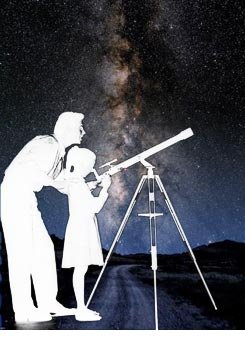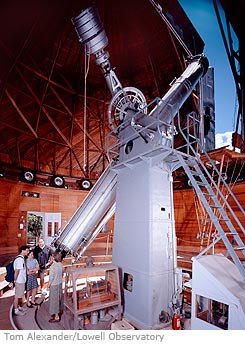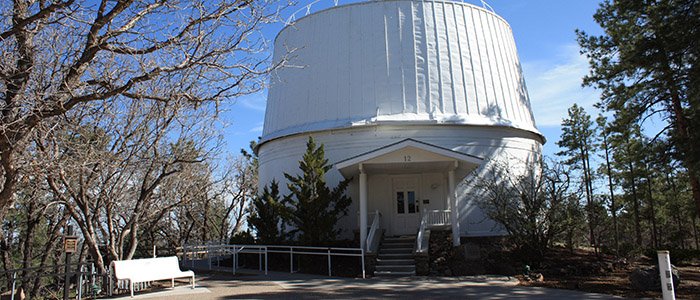Lowell Observatory
Astronomy
Lowell Observatory is not just located in a great spot for stargazing, it´s one of the few observatories open to the public, offering lots of programs, day or night, especially for families.
Overview
Flagstaff, Arizona
“Mom, what´s the Milky Way?”
“We can´t see the Milky Way at home because of all the city lights. But on the mountain, we´ll be able to see a strip of stars so thick that they look like a milky river flowing across the night sky. This is just one arm of our spiral galaxy, which has over two hundred billion stars.”
Today, as never before, we have the technology to get a glimpse of the breathtaking scope of God´s power in the cosmos. A trip to a modern observatory is sure to leave a lasting impression on you and your family.
With its dark, cloudless night skies, Arizona is one of the best places to view the heavens. Lowell Observatory is not just located in a great spot for stargazing, it´s one of the few observatories open to the public, offering lots of programs, day or night, especially for families.
The visitor center and observatory focus on the amazing scale of the universe. Even during the daytime you can look through a filtered telescope to see the sun up close—sunspots, flares, and other amazing features. Then stroll outside on the Pluto Walk, a 350-foot scale model of the solar system, where 1 inch equals 1 million miles. Here, you´ll sense the immense distances between planets (and our own small planet´s special place in God´s created universe).
At night the high-powered telescopes hunt for the most stunning objects in the current sky, whether planets, the moon, star clusters, nebulae, or galaxies. Also watch one of the many multimedia shows.
When your trip is over, your awe at the scale of God´s universe will never be the same.
Recommended by Dr. Danny Faulkner, professor of physics and astronomy at the University of South Carolina Lancaster.
Points of Interest
Tips for Stargazing on Your Own
Arizona is a popular destination for amateur stargazers. Southeast of Flagstaff and far from the city lights is Anderson Mesa, which offers a spectacular view of the Milky Way, even without the aid of binoculars. To get the most out of any stargazing experience, remember these tips:
- Plan to do your stargazing just before a new moon, when the sky is darkest.
- If you can’t observe from the top of a mountain, it’s better to observe on the western side of the mountain than the eastern side where weather will create more turbulence.
- Use a star chart to identify constellations and star names (available at the Lowell gift shop or from AnswersBookstore.com).
- Dress in warm clothing because the temperature drops rapidly after dark.

Lowell Observatory
Far from the light of large cities, Lowell Observatory allows the public to peer into the pitch-black sky with the same high-power telescopes that astronomers use. This family-friendly observatory offers multiple programs, both night and day. Your time at Lowell is guaranteed to give you a once-in-a-lifetime glimpse into the unimaginable scale of God’s universe and the breathtaking wonders it contains.

More Destinations
- The Creation Museum near Cincinnati, Ohio, has a state-of-the-art planetarium and modern creation-based shows.
- Mauna Kea on Hawaii is home to the world´s largest astronomical observatory.
Helpful Tips
- Check www.lowell.edu for daytime tours, evening telescope viewings, and special events.
- Purchase a sky chart at the gift shop, if you don´t already have one.
- Flagstaff is a good base for worldview-building excursions, including Grand Canyon, Petrified Forest, Painted Desert, Sunset Crater, Meteor Crater, and numerous Indian ruins.
Recommended Resources

Answers in Genesis is an apologetics ministry, dedicated to helping Christians defend their faith and proclaim the good news of Jesus Christ.
- Customer Service 800.778.3390
- Available Monday–Friday | 9 AM–5 PM ET
- © 2025 Answers in Genesis


